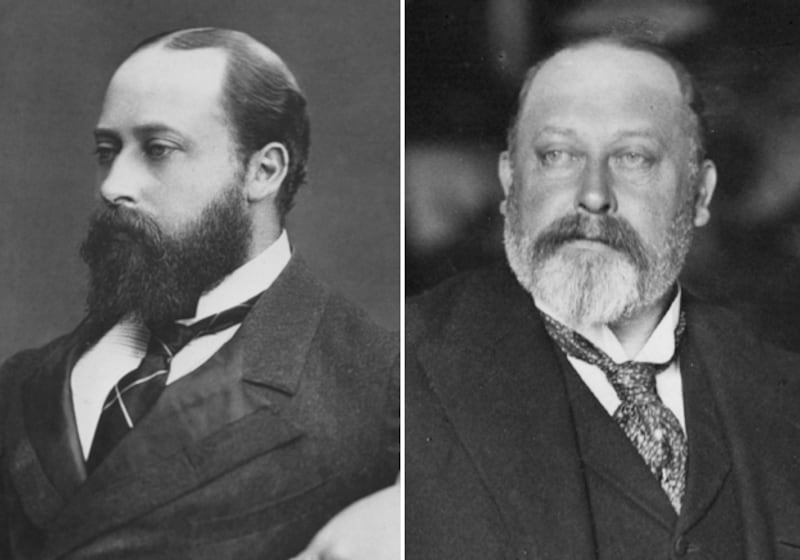
Age of Balding: 35
Although he once had a full head of Shirley Temple-esque curls, by the time Edward VII reached 35, the forehead of Queen Victoria's eldest son was far more visible and he'd developed an island on the back of his skull. But what he lacked on the top, he made up for on the bottom. At the turn of the 20th century, the 59-year-old Edward VII assumed the throne with his very bushy beard, piercing blue eyes, bulging belly, and noticeably receding hairline. Throughout the United Kingdom's Edwardian Age that followed, the king's hairlessness was portrayed on
coins and a collection of 39 postage
stamps, known as the "Bald Issues."
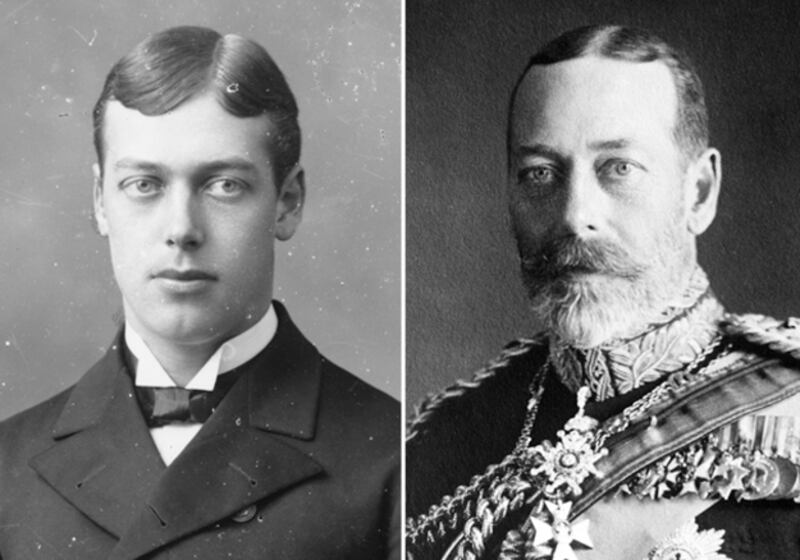
Age of Balding: 35
Much like his father and royal predecessor, Edward VII, King George V suffered from a growing forehead. Though the side-parted, slicked-down style stayed with him, his head of hair began shrinking at age 35 and continued to do so throughout his years. Working with what he had, George offset the look with a voluptuous mustache, as
Michael Gambon realistically duplicated in the Oscar-winning film
The King's Speech. If George V and his father taught royals anything about maintaining one's dwindling mane, it's this: Grow facial hair.

Age of Balding: 28
Though William's grandfather married into the royal family, he shared the House of Windsor's lack of hair. When he stepped into the spotlight with the future
Queen Elizabeth II in his mid-20s, he was already thinning on top. And though the regal consort has unwaveringly stood by her throughout their 60-plus years together, his tresses have fallen by the wayside.
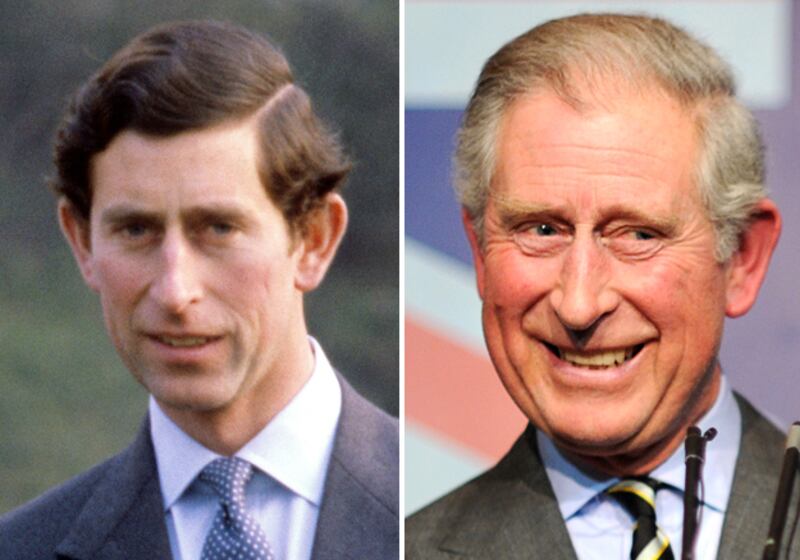
Age of Balding: 28
Like Edward VII and George V before them, Prince Philip and his son Prince Charles both began losing their hair at the same age—and both have opted for the comb-over cover-up. Though Charles' ‘do is far from Donald Trump's, it's still been the topic of much discussion. In 2008, after nearly 30 years of showing off his cranial island to the public, speculation arose that he had gotten transplants, a weave, or some kind of augmentation to his not-so-full head of hair. "We would not normally comment on personal details or silly things like this," a Clarence House spokesperson told
The Daily Mail. "But I can say that it is absolute nonsense." Still, it's difficult to deny that the longtime hairless heir is somewhat bothered by his deficiency. According to the paper, Prince Charles reportedly asked the photographer who revealed his royal patch in the ‘70s, "Was it really that bad? Everybody has been looking at the back of my head ever since." In 2004, Charles celebrated the attention and launched a range of beauty products called
Duchy.
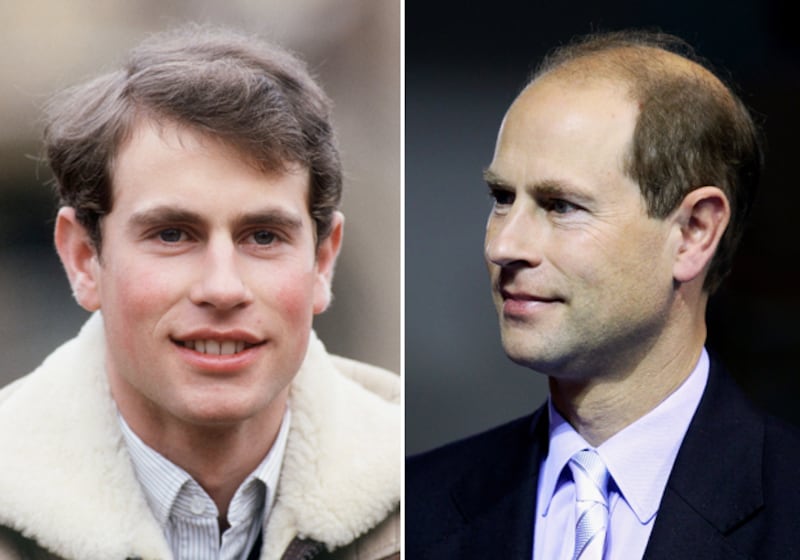
Age of Balding: 21
Prince Charles' younger brother and William's uncle holds the title for youngest royal balding age. By the time he was legally permitted to enjoy an alcoholic beverage in the United States, the youngest child of Queen Elizabeth and Prince Philip had already begun losing his hair. Nevertheless, he found a woman who didn't seem to mind—his wife, Sophie Rhys-Jones—and has yet to pass on his hairlessness to a child.
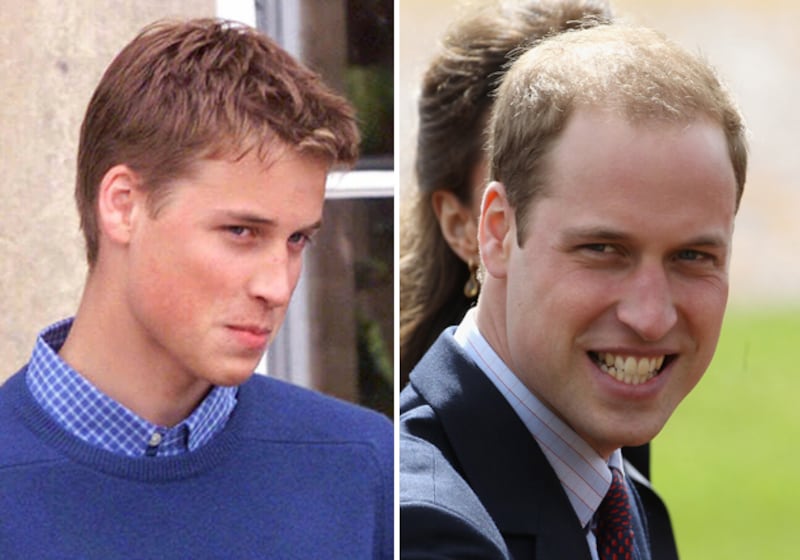
Age of Balding: 25
The groom-to-be had not yet reached the golden balding age of his father and grandfather, 28, when he too began showing his spots—and the world took notice. Throughout his boyhood and teenage years, Prince William had a full head of dirty-blond hair. Despite his being named one of People magazine's Most Beautiful People in 1998, the royal epidemic of male pattern baldness eventually managed to infect his scalp as well. Experts say the condition is passed from the maternal side of one's family, but William fell victim to what is known as "
the curse of the Windsors" when he reached his mid-20s as he left a nightclub in 2007. For his bride
Kate Middleton, William's baldness may have been a gift:
The New York Times suggested that the prince "felt an urge to lock up a commitment from Ms. Middleton because his heart-throb status might be beginning to disappear with the hair."




